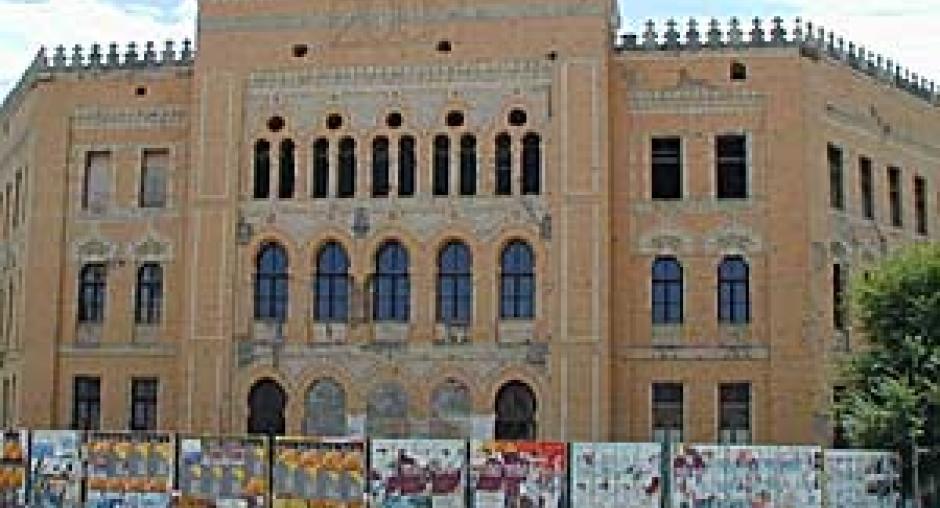Newsroom
International community presents plan for integration of Mostar schools
MOSTAR 16 July 2003

(OSCE)The Old Mostar Gymnasium in Bosnia and Herzegovina. (OSCE) Photo details
MOSTAR, 16 July 2003 - The OSCE Mission to Bosnia and Herzegovina (BiH) has presented officials and citizens of Mostar with a plan for the integration of two gymnasia (secondary schools), currently separated by the Boulevard in the centre of town.
The plan envisages the 'Fra Dominika Mandica' and 'Mostar First' Gymnasia being integrated within a revitalized and modernized Mostar Old Gymnasium, a school that will celebrate its 110th anniversary in September this year.
"The Mostar Old Gymnasium had the reputation of being one of the finest schools in the former Yugoslavia," said Ambassador Tom Young, Director of the OSCE Regional Centre in Mostar. "Now, successor student generations are working in cramped, poorly equipped premises within separate schools and their education is suffering."
As part of the Plan for integration of the 'Fra Dominika Mandica' and 'Mostar First' Gymnasia, the South West and Old Town municipalities will be co-founders of the new school, with equal say in its administration, including the appointment of a joint school board and a single school Director. Apart from administrative unification, the plan includes integration of five science subjects, namely mathematics, physics, chemistry, biology and information technology. During the first semester, the Cantonal Ministry of Education, in consultation with the educational institutes, will develop a plan for the integration of other subjects.
"Integration is a process that calls for consultation and compromise from all sides," said Ambassador Young. "It is also a process which the Education Ministries in BiH committed themselves to when they adopted the Education Strategy Paper in November last year."
The Integration Plan will lead to financial savings for the Cantonal Ministry for Education, which can be reinvested into the modernization of the education system. For September 2003, the international community plans to support the modernization of the Mostar Old Gymnasium by providing science equipment, classroom furniture and sports facilities. The international community will continue to work with local authorities to monitor and support the integration process and to re-establish the school as a centre of excellence.
The plan envisages the 'Fra Dominika Mandica' and 'Mostar First' Gymnasia being integrated within a revitalized and modernized Mostar Old Gymnasium, a school that will celebrate its 110th anniversary in September this year.
"The Mostar Old Gymnasium had the reputation of being one of the finest schools in the former Yugoslavia," said Ambassador Tom Young, Director of the OSCE Regional Centre in Mostar. "Now, successor student generations are working in cramped, poorly equipped premises within separate schools and their education is suffering."
As part of the Plan for integration of the 'Fra Dominika Mandica' and 'Mostar First' Gymnasia, the South West and Old Town municipalities will be co-founders of the new school, with equal say in its administration, including the appointment of a joint school board and a single school Director. Apart from administrative unification, the plan includes integration of five science subjects, namely mathematics, physics, chemistry, biology and information technology. During the first semester, the Cantonal Ministry of Education, in consultation with the educational institutes, will develop a plan for the integration of other subjects.
"Integration is a process that calls for consultation and compromise from all sides," said Ambassador Young. "It is also a process which the Education Ministries in BiH committed themselves to when they adopted the Education Strategy Paper in November last year."
The Integration Plan will lead to financial savings for the Cantonal Ministry for Education, which can be reinvested into the modernization of the education system. For September 2003, the international community plans to support the modernization of the Mostar Old Gymnasium by providing science equipment, classroom furniture and sports facilities. The international community will continue to work with local authorities to monitor and support the integration process and to re-establish the school as a centre of excellence.
